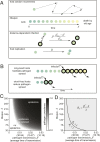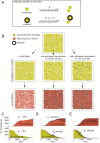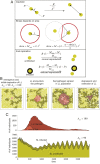Epidemics as an adaptive driving force determining lifespan setpoints
- PMID: 32651271
- PMCID: PMC7395509
- DOI: 10.1073/pnas.1920988117
Epidemics as an adaptive driving force determining lifespan setpoints
Abstract
Species-specific limits to lifespan (lifespan setpoint) determine the life expectancy of any given organism. Whether limiting lifespan provides an evolutionary benefit or is the result of an inevitable decline in fitness remains controversial. The identification of mutations extending lifespan suggests that aging is under genetic control, but the evolutionary driving forces limiting lifespan have not been defined. By examining the impact of lifespan on pathogen spread in a population, we propose that epidemics drive lifespan setpoints' evolution. Shorter lifespan limits infection spread and accelerates pathogen clearance when compared to populations with longer-lived individuals. Limiting longevity is particularly beneficial in the context of zoonotic transmissions, where pathogens must undergo adaptation to a new host. Strikingly, in populations exposed to pathogens, shorter-living variants outcompete individuals with longer lifespans. We submit that infection outbreaks can contribute to control the evolution of species' lifespan setpoints.
Keywords: aging; epidemics; evolution; lifespan.
Copyright © 2020 the Author(s). Published by PNAS.
Conflict of interest statement
The authors declare no competing interest.
Figures







Similar articles
-
Is Aging an Inevitable Characteristic of Organic Life or an Evolutionary Adaptation?Biochemistry (Mosc). 2022 Dec;87(12):1413-1445. doi: 10.1134/S0006297922120021. Biochemistry (Mosc). 2022. PMID: 36717438 Free PMC article. Review.
-
Could aging evolve as a pathogen control strategy?Trends Ecol Evol. 2022 Dec;37(12):1046-1057. doi: 10.1016/j.tree.2022.08.003. Epub 2022 Sep 9. Trends Ecol Evol. 2022. PMID: 36096982 Review.
-
Theory and associated phenomenology for intrinsic mortality arising from natural selection.PLoS One. 2017 Mar 29;12(3):e0173677. doi: 10.1371/journal.pone.0173677. eCollection 2017. PLoS One. 2017. PMID: 28355288 Free PMC article.
-
Pathogen evolution in finite populations: slow and steady spreads the best.J R Soc Interface. 2018 Oct 3;15(147):20180135. doi: 10.1098/rsif.2018.0135. J R Soc Interface. 2018. PMID: 30282758 Free PMC article.
-
Germline burden of rare damaging variants negatively affects human healthspan and lifespan.Elife. 2020 Apr 7;9:e53449. doi: 10.7554/eLife.53449. Elife. 2020. PMID: 32254024 Free PMC article.
Cited by
-
Host age structure reshapes parasite symbiosis: collaboration begets pathogens, competition begets virulent mutualists.Biol Direct. 2022 Nov 12;17(1):30. doi: 10.1186/s13062-022-00343-9. Biol Direct. 2022. PMID: 36371206 Free PMC article.
-
Mitochondrion-targeted antioxidant SkQ1 prevents rapid animal death caused by highly diverse shocks.Sci Rep. 2023 Mar 15;13(1):4326. doi: 10.1038/s41598-023-31281-9. Sci Rep. 2023. PMID: 36922552 Free PMC article.
-
Innate Immunity as an Executor of the Programmed Death of Individual Organisms for the Benefit of the Entire Population.Int J Mol Sci. 2021 Dec 15;22(24):13480. doi: 10.3390/ijms222413480. Int J Mol Sci. 2021. PMID: 34948277 Free PMC article. Review.
-
Is Aging an Inevitable Characteristic of Organic Life or an Evolutionary Adaptation?Biochemistry (Mosc). 2022 Dec;87(12):1413-1445. doi: 10.1134/S0006297922120021. Biochemistry (Mosc). 2022. PMID: 36717438 Free PMC article. Review.
-
Anti-cancer Virotherapy in Russia: Lessons from the Past, Current Challenges and Prospects for the Future.Curr Pharm Biotechnol. 2023;24(2):266-278. doi: 10.2174/1389201023666220516121813. Curr Pharm Biotechnol. 2023. PMID: 35578840 Review.
References
-
- Medawar P. B., An Unsolved Problem of Biology (H. K. Lewis, London, 1952).
-
- Kirkwood T. B., Holliday R., The evolution of ageing and longevity. Proc. R. Soc. Lond. B Biol. Sci. 205, 531–546 (1979). - PubMed
-
- Williams G. C., Pleiotropy, natural selection, and the evolution of senescence. Evolution 11, 398–411 (1957).

